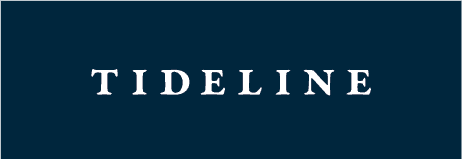Authors: Deegan Lee, Associate; Joohee Rand, Associate Partner
8 minutes read
On the final day of AVPN Global Conference 2023 in Kuala Lumpur last June, which brought together over 1,300 stakeholders across the full continuum of impact capital, from the most commercial to the most catalytic, Tideline, BlueMark, and AVPN, had the great privilege of hosting a workshop on the opportunities, challenges, and best practices in Impact Management in Asia.
Attended by over 65 practitioners, the workshop featured a presentation by Tideline and BlueMark on impact investing best practices as documented in the fourth annual Making the Mark Report and a dialog between global and local asset owners, fund managers, and intermediaries sharing their Impact Management (IM) journey and perspectives on the current state of IM practice in Asia. For this panel, we were joined by five impact investing experts: Chayan Dhir (Leapfrog Investments), Jaeheon Jeong (Crevisse Partners), Yuya Kato (Japan Social Innovation and Investment Foundation or SIIF), Lin-Net Koh (Temasek Trust’s Centre for Impact Investing and Practices or CIIP), and Stephen Lee (Nuveen). The workshop concluded with an interactive breakout discussion related to the core characteristics of impact investing – intentionality, contribution, and measurement – which are detailed in Tideline’s Truth in Impact report.
In the spirit of shared learning, we are pleased to share 5 takeaways – with 15 supporting observations – from our workshop:
1. Intentionality
Strong impact management is key to overcoming misconceptions about impact investing, and mainstreaming of the market to scale with integrity.
Beyond Concessionary, Beyond ESG
The common misconception about impact investing as being inherently concessionary and the conflation between ESG and impact could hinder growth of the field in the region. Addressing these misconceptions is a crucial step in scaling the market in Asia. In distinguishing impact investors from others, “what made the difference was impact measurement and management” noted Lin-Net Koh speaking to CIIP’s experience as a field builder in the region, further emphasising that IM should not be viewed as a niche, but should be mainstream. As Yuya Kato from SIIF notes, all impact investors can play a role in communicating and upholding impact integrity by developing strong impact management practices, which help differentiate impact investors from “investors with a good heart”.
Defining What “Good” Looks Like
Recognizing that assessing impact is not as straightforward as calculating financial returns, it can be challenging to decipher what qualifies as “good enough” from an impact perspective. Many impact investors employ an impact assessment framework, building upon globally accepted frameworks like the Impact Management Project’s 5 Dimensions of Impact as one of several tools used to analyse a potential investment’s capacity to achieve desired social or environmental outcomes. By leveraging standard frameworks, impact investors can uphold a high degree of impact rigour and avoid mission drift. At the organisation level, Chayan Dhir highlighted the importance of impact intentionality at Leapfrog Investments, where impact is the job of everyone in the team, governed at the highest level, and is embedded in every stage of the investment process.
KPIs and Impact Carry
In light of increasing industry integrity and intentionality, Stephen Lee from Nuveen discussed the firm’s plans of employing impact carry, where a share in investment profits are tied to impact Key Performance Indicator (KPI) metrics. By integrating impact metrics into the carry structure, investors can create a stronger connection between financial gains and positive social or environmental outcomes, ultimately driving a more purpose-driven approach to investment decision-making.
2. Contribution
A strong partnership for impact with portfolio companies, tailored to an investors’ strengths and expertise, is crucial to value creation.
Many Approaches to Value Creation
When considering opportunities for contribution, investors should leverage their organisations’ strengths to enhance engagement strategies with portfolio companies. For instance, a foundation’s ability to offer patient and flexible capital is highly valued, while a global, institutional investor’s extensive network of experts and capacity to “mainstream” or “institutionalise” an innovative business model can be extremely beneficial. Thematic investors can also harness synergies and retain knowledge gained from working with multiple portfolio companies in a particular sector or industry.
Deep Sector Expertise, Tailored Strategies
Jaeheon Jeong explained that Crevisse Partners develops and leverages deep operational expertise and field knowledge in the portfolio company’s sector to enhance their value as a strategic advisor. Whether it is directly executing voluntary carbon projects on company-owned forests to gain knowledge on carbon credit markets, or working behind the bar of a coffee company in the portfolio to understand the stakeholders, Crevisse aims for knowledge leadership in setting strategic agendas to create both financial and impact value. Crevisse also actively develops blended finance programs to enable allocation of capital to underserved markets (e.g., most recently investing in Climate-Smart Agriculture venture in Indonesia) along with its market rate private equity funds.
Partners in Impact
Looking forward, investors should adopt a mindset that considers portfolio companies as an extension of an investor’s own organisation, leading to more thoughtful decision-making. Moreover, the conversation highlighted the importance of fostering collaboration among investors and encouraging the public sharing of IM best practices derived from actively engaging with portfolio companies.
3. Measurement
A focus on learning, beneficiary outcomes, and quality data can help move the field forward.
Fundamental Role of Data
Measurement is required to ensure impact investing scales with integrity and efficiency. As Chayan Dhir from Leapfrog notably mentioned, “data is the blood that flows through the system,” underscoring the fundamental role of data in impact management. While the importance of collecting and reporting impact Key Performance Indicators (KPIs) has long been established, Chayan urged impact investors to go beyond data collection and reporting, making an effort to actively utilise the information to improve decision-making.
Focus on End Beneficiary Outcome
A notable strength highlighted in IM practice in the region was the attention to and investment in in-depth research to understand market gaps and end beneficiary needs and outcomes by leaders in the field. Leapfrog Investments’ Emerging Wealth and Health Index based on surveys of nearly 4,000 low-income consumers in eight Asia and Africa markets and CIIP’s newly published report focused on financial inclusion, Accelerating Impact Beyond Access, leveraging data from over 50 industry interviews and +6,500 individual customers, are such examples of advanced practices. Importantly, CIIP’s research also provided data-driven evidence of the correlation between impact practice and performance – demonstrating that companies with robust impact measurement and management had greater outcomes in customers’ quality of life and business incomes.
Data Quality and Assurance
High-quality and consistent data is essential to strengthening the integrity of the impact investing market and the next frontier of impact measurement may revolve around data assurance building on the industry momentum for verification of investors’ impact practice and reporting. Asset owners can serve as potential catalysts for driving this shift – for example by encouraging the assurance or audit of impact data.
4. Localization
A localised strategy, beyond alignment with global standards, is needed to achieve progress towards solutions.
Global Standards vs. Local Contexts
Panellists agreed that globally, impact management practices are more similar than different, particularly driven by the growth of globally accepted standards and frameworks like the SDGs, the OPIM principles, the 5 Dimensions of Impact, and IRIS+. However, this does not eliminate the need for global investors to adapt their impact strategy in Asia, given the variances that stem from government policy/regulation, social-economic, geographic, and cultural differences.
Local Entrepreneur Capacity
Global investors must be cognizant of how their processes or strategy hinder portfolio companies in Asia, particularly those that are small businesses or unfamiliar with impact investing. For example, a low-tech company may need additional resources and support to understand a European investor’s SFDR requirements or a climate manager’s scope 1-3 emissions reporting protocols. Investors should be ready to bridge this knowledge gap.
Stakeholder Engagement
Localised data and stakeholder engagement is essential for ensuring that the intended impact is genuinely felt within local communities. Investors should go beyond the measurement of outputs to more fully understand the holistic impact of a company’s activities on the communities and end beneficiaries. Recognizing the contextual nature of impact, investors need to collect and analyse data directly from the communities they seek to serve, actively involving stakeholders in the impact measurement process. The earlier examples of Leapfrog Investments and CIIP are powerful case studies.
5. Ecosystem
Capacity building, collaboration, and shared learning will enable quicker progress. Asset owners and field builders have an important role to play.
Collective Learning
Looking ahead, impact investors have the power to drive further progress in the marketplace by embracing a collaborative approach. Participants emphasised the value of sharing stories, impact management practices, and lessons learned, all contributing to the collective knowledge and growth of the impact investing community. Stephen Lee from Nuveen mentioned that impact verification also offers a unique learning opportunity to better understand how your practices hold up against peers in the marketplace.
Role of Field Builders
Intermediaries like AVPN, CIIP, and SIIF play crucial roles in building local and regional ecosystems and capacity, addressing the knowledge gap with research and thought leadership, as well as providing targeted training and helpful resources for those seeking to learn, while enhancing their impact investing practices. They also help to foster connection both within the local ecosystem and with the global community.
Role of Asset Owners
Yuya Kato from SIIF highlighted how local asset owners can play a powerful role in advancing IM practice in the region by asserting healthy pressure on asset managers for measurable impact with clear intention and contribution strategy. Asset owners can also play a significant role as educators and capacity builders.
Conclusion
We are optimistic that a growing community of intentional, learning-oriented practitioners and innovative practices for impact management will ultimately help drive deep impact in the region, mobilising capital to address the region’s most intractable challenges. We express our gratitude for the collaborative spirit and the diligence demonstrated by all participants. We also welcome engagement and partnership from all stakeholders as we further our research to deepen our collective understanding and support actions to enable robust impact management in Asia’s growing impact investing market.
Tideline, BlueMark, and AVPN are collaborating to take a deeper dive into the region’s impact management practices in the context of the rapidly evolving global impact investing market and IM standards. If you are interested in being part of that effort, please reach out to Tideline ([email protected]) or AVPN ([email protected]).


















